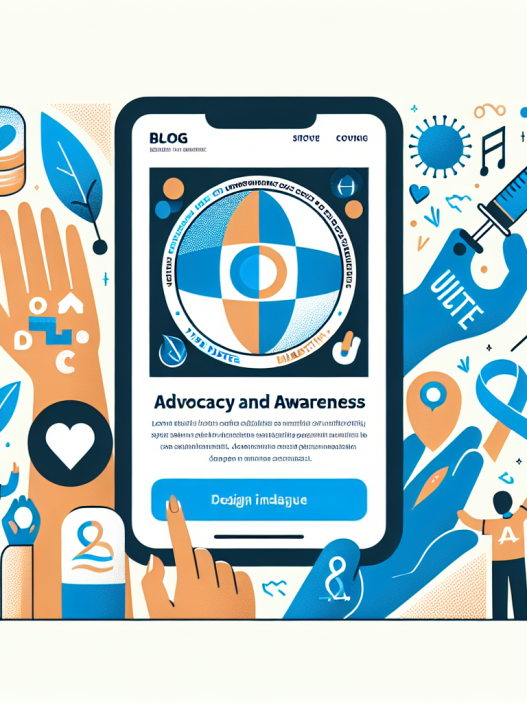[ad_1]
Living with Type 1 diabetes can be challenging, particularly when it comes to making food choices. With the right knowledge and strategies, you can navigate your dietary needs effectively. This comprehensive guide aims to empower you with essential information about food choices, blood sugar management, and overall health, making it easier to maintain a balanced lifestyle while living with Type 1 diabetes.
Understanding Carbohydrates: The Backbone of Diabetic Nutrition
Carbohydrates play a significant role in the diet of individuals with Type 1 diabetes. They are one of the primary sources of energy and can impact blood sugar levels more than other macronutrients. It’s essential to understand how different types of carbohydrates affect your glucose levels. Simple carbohydrates, such as sugars in fruits and sweets, can cause rapid spikes in blood sugar, whereas complex carbohydrates, like whole grains and legumes, release energy more slowly and provide a steadier source of glucose.
For those managing Type 1 diabetes, counting carbohydrates becomes crucial. Having an accurate understanding of the carbohydrate content in foods allows you to calculate insulin doses more effectively. Always consider not only the total carbohydrates but also their glycemic index (GI), which indicates how quickly they raise blood sugar levels. Foods with a low GI (like oats and legumes) are preferable as they help maintain stable blood sugar. Conversely, high-GI foods (like white bread and sugary cereals) should be consumed with caution.
Balancing Your Plate: Macronutrient Ratios for Diabetic Health
Achieving a balanced diet involves integrating a variety of macronutrients—carbohydrates, proteins, and fats. For individuals with Type 1 diabetes, a well-balanced plate is crucial not only for maintaining energy levels but also for stabilizing blood sugar levels. A recommended distribution might include 45-60% of your total calorie intake from carbohydrates, 10-35% from protein, and 20-35% from healthy fats. However, these ratios can vary based on personal health needs, activity levels, and specific nutritional goals.
Incorporating lean proteins, such as chicken, turkey, fish, beans, and tofu, supports muscle growth and repair while helping to keep you feeling full longer. Healthy fats from sources like avocados, nuts, seeds, and olive oil are beneficial for cardiovascular health and can support overall well-being. Don’t forget to include plenty of non-starchy vegetables, which provide essential vitamins, minerals, and fiber without significantly impacting blood sugar levels.
The Role of Fiber: A Key Component in Blood Sugar Management
Fiber is another critical element of a diabetes-friendly diet. It aids in digestion and helps to slow the absorption of sugar into the bloodstream, which can help stabilize blood sugar levels. There are two types of fiber: soluble and insoluble. Soluble fiber, found in oats, beans, lentils, and many fruits, can help lower blood cholesterol levels and regulate blood sugar. Conversely, insoluble fiber, found in the skins of fruits and vegetables and whole grains, promotes healthy bowel movements.
When planning meals, aim for at least 25-30 grams of fiber each day. Focus on including a variety of fiber-rich foods in your diet and gradually increase your fiber intake to avoid digestive discomfort. Drinking plenty of water is essential when consuming more fiber, as this will help your body digest it more efficiently.
Dairy and Dairy Alternatives: How to Make the Right Choices
Dairy products can be a good source of calcium and protein but often have added sugars and carbohydrates, especially in flavored varieties. When selecting dairy products, choose unsweetened options whenever possible. Low-fat or fat-free yogurts and milk can be beneficial, as they provide essential nutrients without excessive calories. Check food labels closely to be aware of carbohydrate content and serving sizes.
For those who are lactose intolerant or prefer plant-based diets, dairy alternatives are widely available. Almond, soy, and oat milk can serve as excellent substitutes, but be cautious with added sugars. Always opt for unsweetened varieties, and check the nutrition labels to ensure they fit within your dietary guidelines. Remember, many dairy alternatives can also vary significantly in their protein and calcium content, so choose fortified options when necessary.
Glycemic Index and Load: Understanding Their Impact on Food Choices
The glycemic index (GI) is a tool that ranks foods based on how quickly they raise blood sugar levels after consumption. Foods with a high GI score (70 or above) cause rapid increases in blood sugar, while those with a low GI score (55 or below) result in a more gradual rise. Incorporating more low-GI foods into your diet can help maintain stable blood glucose levels throughout the day, reducing the risk of spikes and crashes.
Glycemic load (GL) considers both the GI of a food and the amount of carbohydrates present. Foods with a high GL can significantly impact blood sugar levels even if their GI score is moderate. To better navigate food choices, familiarize yourself with both GI and GL, especially as you prepare meals or snacks. Opt for foods that have low to moderate GL scores to ensure more balanced blood sugar management, promoting better overall health.
Meal Planning and Preparation: Strategies for Success
Meal planning is essential for managing Type 1 diabetes effectively. By preparing meals in advance, you can ensure you have healthy options available and reduce the temptation to make impulsive choices. Start by planning a menu for the week, incorporating a variety of protein, carbohydrate, and fat sources. This helps create balanced meals that support blood sugar control and overall health.
Consider batch cooking and utilizing storage containers to portion out meals. This can save time and effort during busy weekdays. Be mindful of carb counts in each meal, and remember to include low-GI options and a good balance of macronutrients. Preparing a shopping list before you go grocery shopping can also help prevent impulse buys of unhealthy foods that could disrupt your dietary goals.
Conclusion
Navigating food choices as a person with Type 1 diabetes may seem daunting, but with the right tools and knowledge, it can become a manageable part of your lifestyle. By understanding the impacts of carbohydrates, balancing your plate with macronutrients, and including fiber-rich foods, you can maintain healthier blood sugar levels. Always remember the importance of planning meals and understanding the glycemic index and load of foods you consume. With careful planning and informed choices, you can enjoy a varied and fulfilling diet while effectively managing your diabetes.
This guide aims to provide clarity and support in managing food choices while living with Type 1 diabetes. If you have tailored concerns or specific dietary needs, it is always advisable to consult with a registered dietitian or a healthcare professional for personalized advice.
[ad_2]




















